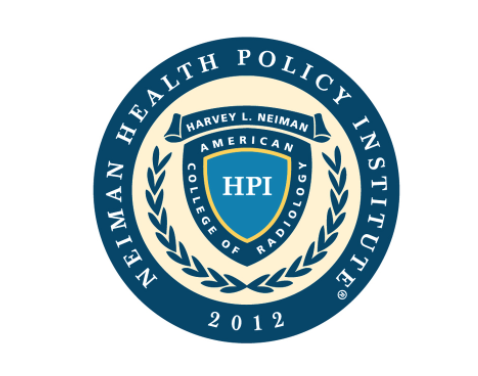Radiology-only Practices Increased Rate of Employing Non-Physician Providers
 Between 2017 and 2019, the number of non-physician providers (NPPs, which includes nurse practitioners and physician assistants) employed by radiology-only practices increased 18%, according to a new Harvey L Neiman Health Policy Institute study published in the Journal of the American College of Radiology. This increase was associated with more NPPs employed per practice as well as an 11%increase in the number of practices employing them.
Between 2017 and 2019, the number of non-physician providers (NPPs, which includes nurse practitioners and physician assistants) employed by radiology-only practices increased 18%, according to a new Harvey L Neiman Health Policy Institute study published in the Journal of the American College of Radiology. This increase was associated with more NPPs employed per practice as well as an 11%increase in the number of practices employing them.
The study was based on Centers for Medicare and Medicaid Services databases of doctors and clinicians who participated in Medicare. Radiology practices were defined as practices in which all affiliated physicians were radiologists. Two-thirds of US radiologists currently practice in radiology-only practices.
The study found that radiology practices were more likely to employ NPPs when they employed more than 50 radiologists, were urban located, had above average interventional radiology specialization, and employed more earlier-career radiologists. Given these trends, senior author Richard Duszak, Jr., MD, Professor and Vice Chair for Health Policy and Practice in the Department of Radiology and Imaging Sciences at Emory University School of Medicine and Neiman HPI Affiliate Senior Research Fellow stated: “As radiology practice and professional society leaders seek to better understand and react to apparent trends in NPPs, our findings about their evolving use within the specialty could inform these efforts.”
“Given how NPP scope of practice is largely defined by state laws and regulations, our observation of substantial variation in radiology practices’ use of NPPs across state lines was not surprising,” said first author Stefan Santavicca, MS, Senior Data Analyst in the Department of Radiology and Imaging Sciences at Emory University School of Medicine. Specifically, the share of practices with NPPs in 2019 was 15% overall but was 17% for urban practices and 7% for rural practices. Further, the increase in the share of urban practices with NPPs increased from 10% to 17% between 2017 and 2019 while, over the same period, it increased from 5% to 7% for rural practices. “Given reduced local access to both diagnostic and interventional radiologists in rural counties across the US, we found it interesting that urban—rather than rural—radiology practices were much more likely to employ NPPs to meet their clinical service needs.”
Also reported was that each 1% increase in interventional radiologists as a share of all radiologists in a practice was associated with a 453% increase in the odds that the practice employs one or more NPP(s). “We were not surprised to find that a larger presence of interventional radiologists in a practice was strongly predictive of NPP employment as leaders in the interventional radiology community have long called for more longitudinal clinical care within the field” said Dr. Duszak.
“Unexpected by us, given strong concerns raised by younger radiologists in a recent American College of Radiology membership survey, was the observation that groups with greater representation of earlier-career radiologists were more likely to hire NPPs,” said co-author Eric Rubin, MD, partner at Southeast Radiology Limited and Chair of the ACR Commission on Human Resources. Specifically, each additional year of practice, on average within a group, was associated with a 4% decrease in odds of employing NPPs.
Citation
Radiology-only Practices Increased Rate of Employing Non-Physician Providers . Appl Radiol.
March 10, 2022